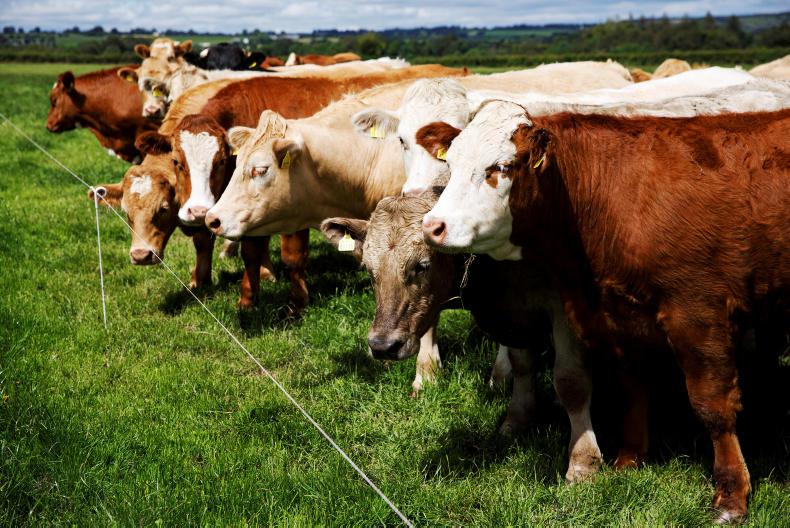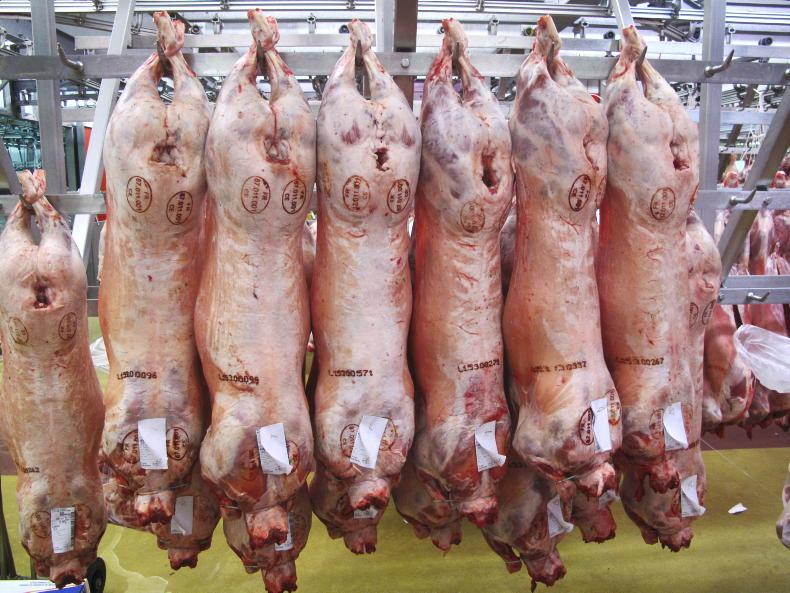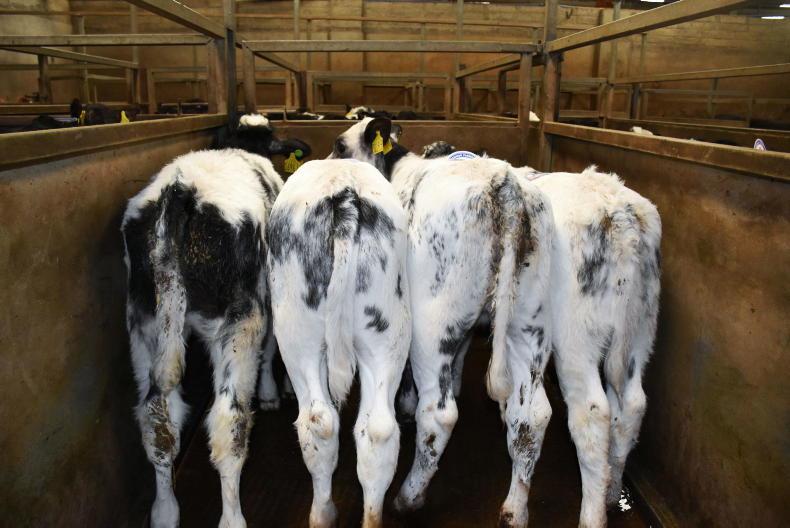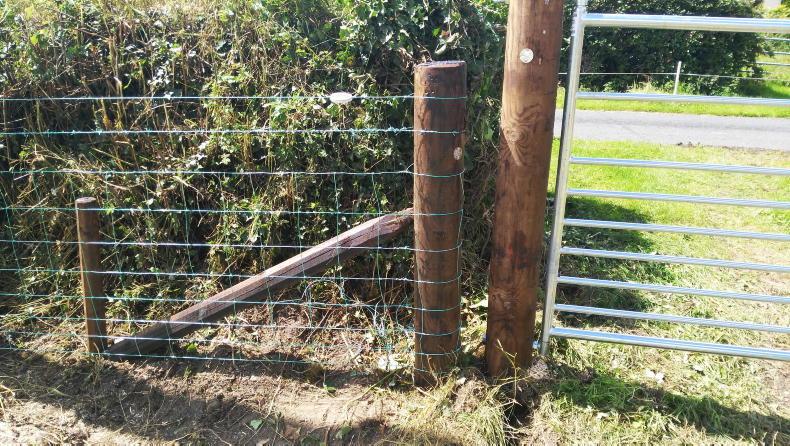Rotationally grazing cattle is the best way to utilise grass. As cattle move to fresh grazing on a regular basis, there is a positive effect on weight gains, provided animals enter swards at the optimum covers.
By resting grass between each rotation, fields tend to yield more grass over the season, compared with set-stocking systems. This allows for higher stocking rates and surplus grass to be harvested as silage.
In other cases, it is the lack of fencing and water provision, as well as the lack of time to move stock routinely
However, there are plenty of farmers that remain unconvinced about rotational grazing. In some instances, this is driven by heavily fragmented land, where there are smaller acreages available to graze.
In other cases, it is the lack of fencing and water provision, as well as the lack of time to move stock routinely.
But very few farmers who establish a paddock system will walk away from it. Look to our colleagues in the dairy sector, where paddocks are the backbone of driving milk from grass.
The same can be achieved with suckler cows. The key thing is to start small and build gradually. Starting out is not easy, as you have to learn to react to grazing deficits and surpluses.
For farmers operating on rented ground, paddocks can still be set up using basic infrastructure that is easily lifted, once the lease on conacre expires. Outlined are some steps to setting up a paddock system.
1
Start small: in the first year, focus on one single land block around 15 to 20 acres in size. Too much too soon is harder to manage.
Aim for one group of cattle on this ground with six to eight grazing divisions. Paddocks should be around two to three acres in size, or as close to this as field boundaries allow.
2
Split big bigger fields: split bigger fields in two to start off. Once your confidence grows, you can make further divisions to cut down paddock size.
3
Plan the rotation out: plan out the order in which fields will be grazed. Look at the access points to fields. Where are gateways located and do they need to be altered? Plan the logical flow of cattle from field to field.
Can drier fields be accessed from wet paddocks, so that in prolonged wet weather, cattle can be easily moved off heavier land?
Don’t forget that you will need to handle cattle for dosing, so try to set up paddocks as close as possible to a laneway, or handling unit.
4
Start off with store cattle: the easiest way to start grazing paddocks is with store cattle and maiden heifers as they should have lower handling requirements compared with cows and calves.
Until animals get used to regular moving between paddocks, getting young calves to follow cows through a gateway can test the patience at the best of times.
5
Water: paddocks with a single water trough are not ideal, especially if the drinker is located in the field corner. But you can work around this.
Split the paddock in two and start with the half that the drinker is located in. Splitting the field diagonally from the drinker also works, but cattle are prone to walk along the wire during wet spells, increasing ground damage.
6 Installing new drinkers: the best option is to invest in a couple of new plastic drinking troughs and a roll of water piping, which can be joined to the existing water supply.
Roll the piping overground and connect to the plastic trough. You will need a couple of wooden fencing posts to brace the drinker.
Using this system can work on rented land, as piping and troughs can be easily removed
Set the drinker up to serve two, three of four paddocks, or place in the middle of the field to supply water to multiple grazing divisions by dividing the field like the spokes of a wheel.
When rolling out the piping, allow extra yardage so that troughs can be moved to a different point in the field, if necessary.
Using this system can work on rented land, as piping and troughs can be easily removed.
Remember to turn the water off in winter to stop pipes from freezing.
7
Electric supply: ideally, use mains electric. But if this is not an option, use a good battery fencer with a minimum of 9V to 12V supply.
Solar fencers will extend the lifespan of a battery. Set the fencer up so that cattle cannot pull or chew on the terminals.
One fencer can be moved from paddock to paddock to provide power as cattle move, cutting down setup cost.
8
Wire and posts: electric wire and reels work well and you get what you pay for. Opt for fencing with nine strands of wire as it carries a better charge.
Geared reels tend to be more robust and hold the wire tension better over longer spans, but non-geared reels work fine for shorter distances.
9
Fertiliser: treating each field with fertiliser after every grazing is not practical. So blanket-spread fertiliser across the whole block every few weeks.
A 20ac block will take one half-tonne bag of fertiliser in each application, which is much more practical in terms of time and workload.
10
When to move cattle: start by moving cattle to fresh grass on a Monday morning, then move animals again on Thursday afternoon. This should mean cattle will be ready to move again on Monday morning.
Once you are more confident at gauging how much grass cattle require, you can move stock more frequently and adjust paddock size to suit.
The same applies during peak grass growth to avoid swards getting too strong for animals.
Costs for setting up paddocks
Outlined is an example of the costs in setting up paddocks on a 20ac grazing block, consisting of three fields measuring 2ac each, three fields measuring around 3ac and one field of 5ac.
The example assumes the 2ac fields are suitable to graze as three separate paddocks, with the four larger fields split in half.
One reel of electric wire can be set up to serve two of the 3ac paddocks, meaning three reels are purchased and 50 plastic posts, plus a solar fencer unit.
Water
Water has to be supplied in the larger field, plus one new drinking trough.
At the outlined cost of €630, over 18 cows on the grazing block, this converts to €35/head.
At a weanling value of €2.30/kg, this equates to 15kg of liveweight weaned and sold.
Costs
30-gallon low-profile plastic drinking trough and fittings: €75.150m plastic water piping (0.5in): €80.Fencing reels x 3 (non-geared): €90.Wire (nine-strand x 200m) x 3: €60.50 plastic posts, (€15 for 15): €75.Fencer unit: €250.Total: €630. Read more
Rotational grazing – is it worth the hassle?
Rotationally grazing cattle is the best way to utilise grass. As cattle move to fresh grazing on a regular basis, there is a positive effect on weight gains, provided animals enter swards at the optimum covers.
By resting grass between each rotation, fields tend to yield more grass over the season, compared with set-stocking systems. This allows for higher stocking rates and surplus grass to be harvested as silage.
In other cases, it is the lack of fencing and water provision, as well as the lack of time to move stock routinely
However, there are plenty of farmers that remain unconvinced about rotational grazing. In some instances, this is driven by heavily fragmented land, where there are smaller acreages available to graze.
In other cases, it is the lack of fencing and water provision, as well as the lack of time to move stock routinely.
But very few farmers who establish a paddock system will walk away from it. Look to our colleagues in the dairy sector, where paddocks are the backbone of driving milk from grass.
The same can be achieved with suckler cows. The key thing is to start small and build gradually. Starting out is not easy, as you have to learn to react to grazing deficits and surpluses.
For farmers operating on rented ground, paddocks can still be set up using basic infrastructure that is easily lifted, once the lease on conacre expires. Outlined are some steps to setting up a paddock system.
1
Start small: in the first year, focus on one single land block around 15 to 20 acres in size. Too much too soon is harder to manage.
Aim for one group of cattle on this ground with six to eight grazing divisions. Paddocks should be around two to three acres in size, or as close to this as field boundaries allow.
2
Split big bigger fields: split bigger fields in two to start off. Once your confidence grows, you can make further divisions to cut down paddock size.
3
Plan the rotation out: plan out the order in which fields will be grazed. Look at the access points to fields. Where are gateways located and do they need to be altered? Plan the logical flow of cattle from field to field.
Can drier fields be accessed from wet paddocks, so that in prolonged wet weather, cattle can be easily moved off heavier land?
Don’t forget that you will need to handle cattle for dosing, so try to set up paddocks as close as possible to a laneway, or handling unit.
4
Start off with store cattle: the easiest way to start grazing paddocks is with store cattle and maiden heifers as they should have lower handling requirements compared with cows and calves.
Until animals get used to regular moving between paddocks, getting young calves to follow cows through a gateway can test the patience at the best of times.
5
Water: paddocks with a single water trough are not ideal, especially if the drinker is located in the field corner. But you can work around this.
Split the paddock in two and start with the half that the drinker is located in. Splitting the field diagonally from the drinker also works, but cattle are prone to walk along the wire during wet spells, increasing ground damage.
6 Installing new drinkers: the best option is to invest in a couple of new plastic drinking troughs and a roll of water piping, which can be joined to the existing water supply.
Roll the piping overground and connect to the plastic trough. You will need a couple of wooden fencing posts to brace the drinker.
Using this system can work on rented land, as piping and troughs can be easily removed
Set the drinker up to serve two, three of four paddocks, or place in the middle of the field to supply water to multiple grazing divisions by dividing the field like the spokes of a wheel.
When rolling out the piping, allow extra yardage so that troughs can be moved to a different point in the field, if necessary.
Using this system can work on rented land, as piping and troughs can be easily removed.
Remember to turn the water off in winter to stop pipes from freezing.
7
Electric supply: ideally, use mains electric. But if this is not an option, use a good battery fencer with a minimum of 9V to 12V supply.
Solar fencers will extend the lifespan of a battery. Set the fencer up so that cattle cannot pull or chew on the terminals.
One fencer can be moved from paddock to paddock to provide power as cattle move, cutting down setup cost.
8
Wire and posts: electric wire and reels work well and you get what you pay for. Opt for fencing with nine strands of wire as it carries a better charge.
Geared reels tend to be more robust and hold the wire tension better over longer spans, but non-geared reels work fine for shorter distances.
9
Fertiliser: treating each field with fertiliser after every grazing is not practical. So blanket-spread fertiliser across the whole block every few weeks.
A 20ac block will take one half-tonne bag of fertiliser in each application, which is much more practical in terms of time and workload.
10
When to move cattle: start by moving cattle to fresh grass on a Monday morning, then move animals again on Thursday afternoon. This should mean cattle will be ready to move again on Monday morning.
Once you are more confident at gauging how much grass cattle require, you can move stock more frequently and adjust paddock size to suit.
The same applies during peak grass growth to avoid swards getting too strong for animals.
Costs for setting up paddocks
Outlined is an example of the costs in setting up paddocks on a 20ac grazing block, consisting of three fields measuring 2ac each, three fields measuring around 3ac and one field of 5ac.
The example assumes the 2ac fields are suitable to graze as three separate paddocks, with the four larger fields split in half.
One reel of electric wire can be set up to serve two of the 3ac paddocks, meaning three reels are purchased and 50 plastic posts, plus a solar fencer unit.
Water
Water has to be supplied in the larger field, plus one new drinking trough.
At the outlined cost of €630, over 18 cows on the grazing block, this converts to €35/head.
At a weanling value of €2.30/kg, this equates to 15kg of liveweight weaned and sold.
Costs
30-gallon low-profile plastic drinking trough and fittings: €75.150m plastic water piping (0.5in): €80.Fencing reels x 3 (non-geared): €90.Wire (nine-strand x 200m) x 3: €60.50 plastic posts, (€15 for 15): €75.Fencer unit: €250.Total: €630. Read more
Rotational grazing – is it worth the hassle?









SHARING OPTIONS